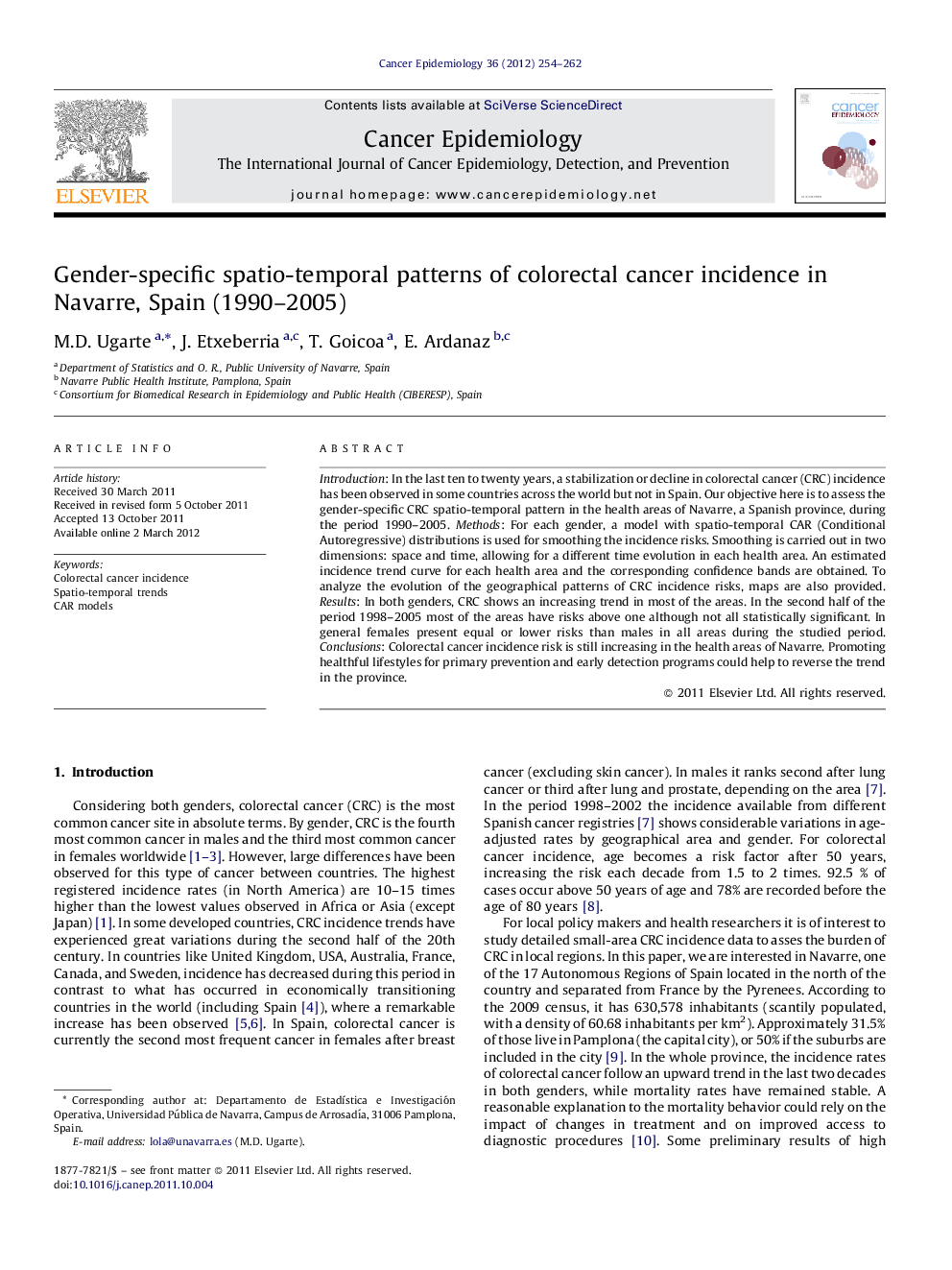| Article ID | Journal | Published Year | Pages | File Type |
|---|---|---|---|---|
| 2109158 | Cancer Epidemiology | 2012 | 9 Pages |
Introduction: In the last ten to twenty years, a stabilization or decline in colorectal cancer (CRC) incidence has been observed in some countries across the world but not in Spain. Our objective here is to assess the gender-specific CRC spatio-temporal pattern in the health areas of Navarre, a Spanish province, during the period 1990–2005. Methods: For each gender, a model with spatio-temporal CAR (Conditional Autoregressive) distributions is used for smoothing the incidence risks. Smoothing is carried out in two dimensions: space and time, allowing for a different time evolution in each health area. An estimated incidence trend curve for each health area and the corresponding confidence bands are obtained. To analyze the evolution of the geographical patterns of CRC incidence risks, maps are also provided. Results: In both genders, CRC shows an increasing trend in most of the areas. In the second half of the period 1998–2005 most of the areas have risks above one although not all statistically significant. In general females present equal or lower risks than males in all areas during the studied period. Conclusions: Colorectal cancer incidence risk is still increasing in the health areas of Navarre. Promoting healthful lifestyles for primary prevention and early detection programs could help to reverse the trend in the province.
